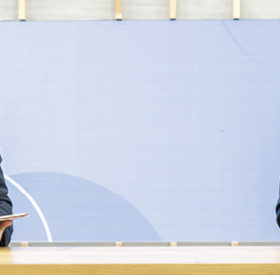Perseverance pays off
With the global pandemic showing few signs of relenting, disruption is commonplace in many parts of the world. Indeed, the dawn of 2022 is taking place against the backdrop of far more unknowns than knowns. Yet despite this, the PV industry is set to achieve another year of rapid expansion. Global installations are widely tipped to exceed 200GW for the year (pp. 12-13), and it will be one in which the milestone of 1 terawatt of installed PV capacity will be surpassed.
New frontiers
There was a time when the solar industry would pile into a new or fast-growing market – generally on the back of an attractive feed-in tariff scheme. And while those days are not entirely in the past, global efforts to decarbonize not only electricity supply but a broader range of economic sectors are opening up new opportunities for PV.
Energy security, solar style
The geopolitical implications of the uptake of renewable energy were brought into focus in 2019, when the International Renewable Energy Agency launched a report, the first of its kind, into the subject. The report argued that with the dominance of oil and gas likely to wane, traditional alliances and power dynamics were likely to shift. It presented a hopeful vision, and one in which the disruption of traditional power dynamics was likely.
Crisis and opportunity
Last month saw global PV installations pass the one-terawatt mark, and electrons generated from solar in 2021 amounted to more than one petawatt-hour – that’s one quadrillion kilowatt-hours, or 3.1% of the world’s electricity.
Ray of light in fog of war
While the loss of life and ongoing peril facing Ukraine continues to shake Europe, the ways in which the conflict will reshape many aspects of life on the continent is beginning to become clear. Energy is a major part of that recalibration. The burning desire to both wean off Russian gas and starve the conflict has delivered considerable momentum, and challenges, to the adoption of renewable energy in the European Union and in neighboring states.
Playing to natural strengths
PV mega projects catch the eye, demonstrate solar’s ability to scale, and have allowed manufacturers to reach serious volumes. But it’s PV’s versatility that truly sets it apart.
More than energy access
Since the turn of the millennium the percentage of the world’s population with access to electricity has risen from 78% to 91%, according to calculations from the Alliance for Rural Electrification.
Smoothing peaks
There are signs that the northern hemisphere summer of 2022 will be one remembered for its extremes. Heatwaves have descended on Europe and parts of North America, breaking records, causing destructive fires, and costing lives. And an unprecedented energy crisis is looming, with increasingly extreme prices for natural gas and electricity observed in some markets.
Framed as savings
Sometimes it’s not what you say, but how you say it. The passing of the US Inflation Reduction Act represented a watershed moment for global climate policy, by virtue of its sheer size and the manner in which it addresses numerous segments of the energy economy. But it is also notable for the way in which the policy frames climate action as making good economic sense, for businesses and households alike.
Plugging in for prosperity
There is little doubt that the need to install solar as quickly as possible is an urgent one. As record-setting gas prices push economies dependent on fossil fuels for electricity generation to the brink, it is consumers and industry that must bear the brunt of the disruption. And since Russia’s invasion of Ukraine is at fault, the need for energy security has never been more widely discussed.










